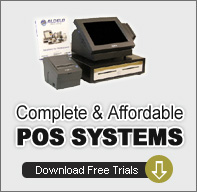Vertical Industry POS SolutionsMost POS software is designed to accommodate one of three distinct industries – retail, restaurant or hospitality. There are specialized applications like those for the medical profession which are referred to as point of service, but this article focuses on the three branches of the industry that are most commonly purchased. All have certain common functions like customer tracking, staff payroll tracking and sales reporting. But the specifics of the way a certain vertical business operates is what distinguishes the applications. For example, restaurant POS software has modules for take-out orders and deliveries as well as bar modules, table seating, reservations, etc. Retail assumes that bar coding of products will be implemented to control inventory and create invoices at point of purchase. Hospitality is centered on room reservations, add-on charges (room service, movies, bar tabs, etc.). In addition, within the retail segment, there are specialized applications. The movie rental business and salons are two examples of specialized applications. Most retail establishments are dealing with product, inventory, bar coding and sale at point of purchase. Specialized configurations like clothing stores having to assign attributes like size, color are built in to the software but require configurations to satisfy the needs of that establishment. Most establishments have configurations dealing with special customers, contractors, group discounts, gift cards, volume discounts, etc. Most software is designed to accommodate this assuming the establishment does the required configurations. In most cases, there is a learning curve for an establishment to understand the many configuration possibilities in specific software and how to apply them. Usually, the vendor of the software helps a business get started and then it is up to an “expert” within that business to do the rest of the heavy lifting. Bar code label makers are another piece of hardware that can be added to a POS system to allow a retailer to assign bar codes to all their inventory so that pricing can be assigned within the software, and inventory tracked at point of purchase. Rich reports can be designed to show what is in stock, what is selling, what is not selling, etc. This knowledge is extremely valuable to a business owner. Customer tracking can be used to send mailers to customers, track best customers, track purchases by customer, do demographic analysis, etc. Customer tracking is one of the common modules across all of the industry vertical applications. Restaurant POS software is frequently on the cutting edge of the industry. Hand held wireless units are now becoming common for waiters and order takers to use. These immediately transmit the order to the kitchen, track the charges, notify the wait person when the order is ready etc. The take-out and delivery ordering for smaller establishments like pizzerias track a customer by the phone number when the call comes in, routes orders for the delivery person, does time analysis on the time between order and delivery and delivers the order to the kitchen. Staff time tracking is another common module across all industries. Staff “clocks in” and “clocks out” through the software which allows payroll to be automated and tracked. The richness and functionality of POS software continues to both grow and become more standardized over time. For most businesses it has become the equivalent of what e-mail and internet connectivity is for the average person – an essential that would be very hard to live without. |
Copyright © touchPOS.net. All rights reserved.








